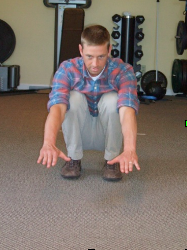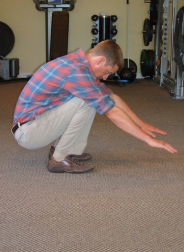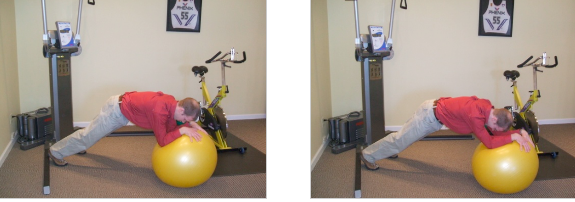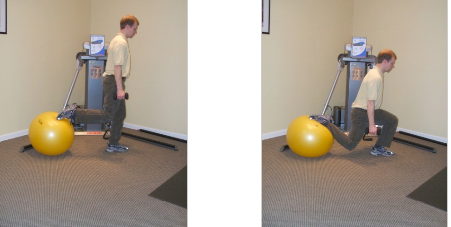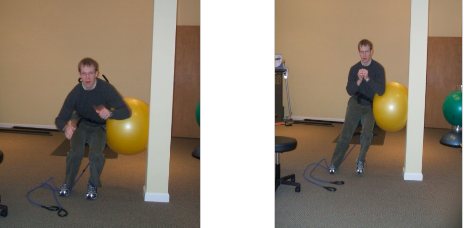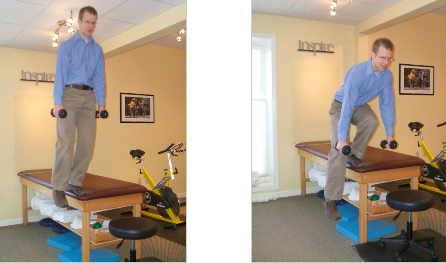Tune Up for the Ski Season With These Exercises
If you have personal goals in mind for the 2012–13 winter ski season, it’s not too late to tune up those ski legs. Do you want to go faster and steeper in the backcountry, enjoy a week-long ski trip, or are you just looking to stay out of the ski patrol shack?
Stability exercises will build a foundation of joint control essential for the development of your strength, coordination and balance on skis.
As the saying goes, we have to stand before we can walk, and walk before we can run. In order for our bodies prepare to handle greater loads and faster movements, logic and experience suggest the stability phase is a good place to start because of the emphasis on muscle coordination for early strength gains. Stability training focuses on slow tempo, controlled exercises. These exercises have low resistance that target muscle fibers, which control our body position, guarding our joints from the stressful twisting movements of imbalanced positions.
As skiers, we all can relate to getting caught off balance during terrain changes when visibility is poor; catching an edge in loose powder, or having to make a sudden turn to avoid a collision. In these situations, the 639 skeletal muscles in your body work interdependently to help you recover your balance (30 are facial but I’m sure our expressions include these as well).
Here are some exercises to improve stability
FULL SQUAT Being able to squat is a basic motion which all skiers need to do well to perform at our best on the hill. Before you get started with the core and single leg exercises, try this squat test to demonstrate general flexibility. Are you able to go into a deep squat with your heels staying down on the floor? If you try to squat and your heels come off the ground the largest muscle in your body gluteus maximus will be inhibited limiting your strength and power. Do your knees stay over your feet or do they turn in or out? Did you fall backward? Falling back on the tails of your skis with your hips below knee level also puts you at risk for injury so be sure to practice good balance and control through a full squat. How did you do?
STABILITY BALL PLANK Start in a kneeling position with your forearms on the ball. Round your back by engaging your abdominals and hold them tight. As you straighten your knees maintain the plank position for 15–30 seconds x3 sets. If you want more of a challenge, try rolling the ball out slightly by reaching out with your arms. You should feel tension across your lower abdominal area not strain in your low back. If you have trouble controlling your body position, try stabilizing the ball against a wall or put the ball aside and practice some floor planks to get the right muscles activated. This exercise will work deep abdominal stabilizers to help balance the efforts of your low back muscles while skiing.
SINGLE LEG STABILITY BALL LUNGE Balance on one foot with your opposite foot resting on the ball directly behind you. Slowly bend your front knee to lower your center of gravity keeping your heel on the ground. Start with partial knee bends making sure your knee stays positioned over your foot. As you progress the depth of your lunge, allow the ball to roll backwards. The thighs of an expert skier look like carved marble but the less known rotator muscles of the hip are important in reducing a harmful twisting motion in your knee. Your balance and body control will improve if you train with stability balance exercises similar to other aspects of athleticism such as strength,flexibility cardiovascular conditioning. You just need to give them a chance.
WALL SQUATS Begin standing with the ball positioned between the wall and your hip/upper thigh. Hold pressure on the ball with your legs and hips. As you squat bend equally through your hips, knees, and ankles to lower your center of gravity. To challenge yourself try lifting your inside foot for a single leg squat. If you are looking for more downhill ski pressure as you link turns this winter, here it is!
SINGLE LEG DEPTH SQUAT Standing on a stable surface, squat down on a single leg lowering your opposite foot toward the floor. Challenge yourself with some hand weights and by increasing the depth of your squat. Start with an 8-inch height. Exercising each leg independently and increasing your depth range will prove useful on the steeper terrain.
Minimal equipment and a little knowledge can go a long way to improving your skills on skis and reduce the likelihood of injury. I encourage all skiers to complete a four-week preparatory phase of stability exercises before getting on snow. Remember: If you can’t do it off the snow, you can’t do it on the snow.

